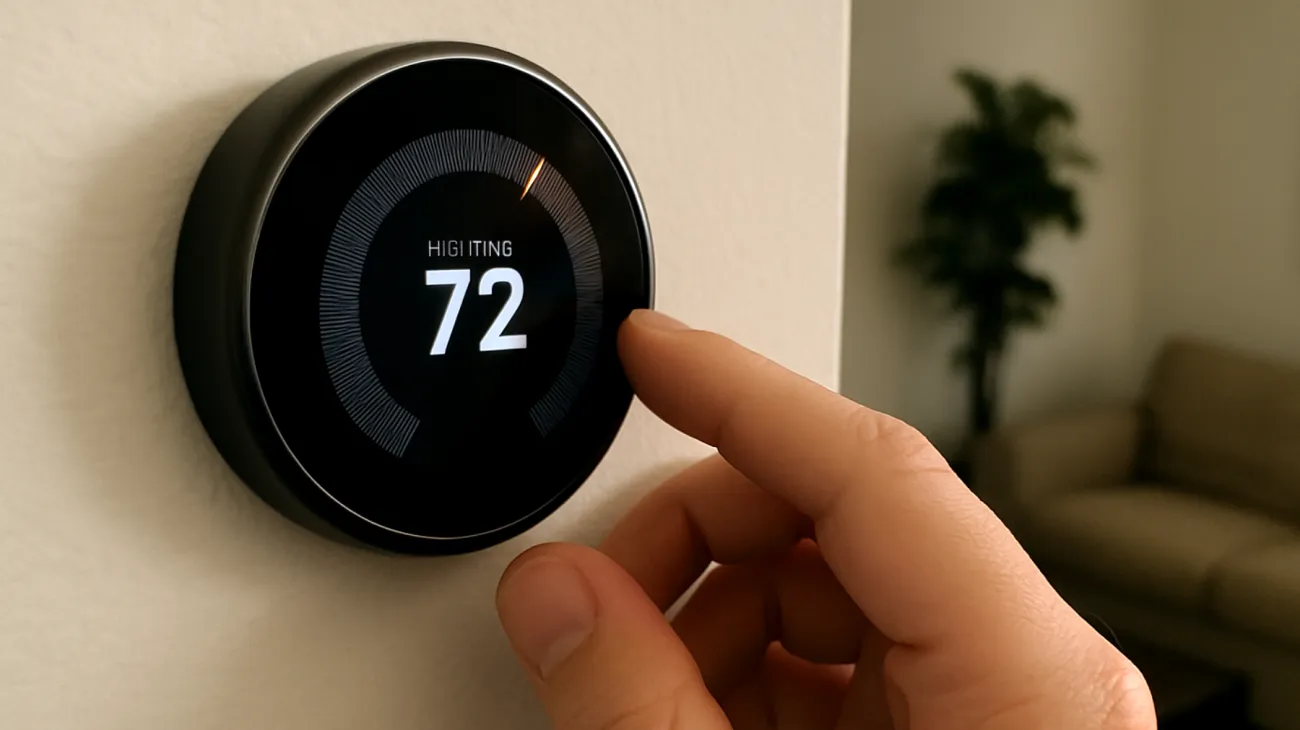Smart Thermostat Glitches: Fixing the Real Reasons Behind Inconsistent Heating and Cooling
A smart thermostat should feel like a quiet genius in your home—automating comfort with effortless precision, adapting to your schedule, and saving energy without you lifting a finger. Yet many households report frustrations: temperatures that feel slightly off, rooms that heat or cool inconsistently, or schedules that seem more erratic than intuitive. The promise of intelligent climate control often falls short of expectations, leaving homeowners wondering whether the technology itself is flawed or if something more fundamental is at play.
The reality is more nuanced than simple product defects. According to research conducted by the Lawrence Berkeley National Laboratory, the performance gap between expected and actual smart thermostat efficiency often stems from installation and configuration issues rather than inherent device limitations. Whether you’re using a Nest, Ecobee, Honeywell, or another brand, several subtle but critical factors determine whether your smart thermostat behaves like a helpful assistant or a confused intern.
These sophisticated devices represent a convergence of sensor technology, machine learning algorithms, and home automation systems. However, their effectiveness hinges on environmental factors that many users overlook during installation. Wi-Fi reliability, installation location, and initial setup routines are not just technical footnotes; they are the foundation for a thermostat that learns and adapts correctly.
Understanding the Hidden Variables
Modern smart thermostats operate as sophisticated data collection and analysis systems. These devices make thousands of micro-decisions daily based on sensor inputs, learned behaviors, and predictive algorithms. However, this intelligence can be compromised by factors that aren’t immediately obvious to most homeowners.
The thermal dynamics of residential spaces involve complex interactions between insulation properties, air circulation patterns, solar heat gain, and occupant behavior. Smart thermostats attempt to model these variables, but their success depends heavily on receiving accurate, representative data from their environment. When that data is skewed by poor placement or connectivity issues, the entire system’s decision-making process becomes flawed.
Research from the American Society of Heating, Refrigerating and Air-Conditioning Engineers indicates that thermostat placement errors are common causes of HVAC system inefficiency. These errors don’t just affect immediate comfort—they can permanently bias the learning algorithms that smart thermostats rely on for long-term optimization.
Why Improper Placement Disrupts Temperature Accuracy
Thermostats don’t feel temperature the way humans do. They rely entirely on the surrounding air at their sensor location, and even small variations in microclimate can significantly impact overall system performance. Place a smart thermostat in the wrong spot, and its readings won’t match actual comfort levels in other rooms.
Three placement errors stand out based on field studies conducted by HVAC research institutions. When sunlight hits the thermostat even briefly during the day, it can spike temperatures by several degrees. This leads the algorithm to stop heating earlier or initiate unnecessary cooling, throwing off comfort for the whole house. The radiant heat effect can create temperature differentials of 3-5°F compared to shaded locations, causing the system to misinterpret the actual space conditioning needs.
If a thermostat sits near a draft source or an air vent, warm or cool air doesn’t represent the room’s average condition. Research from the National Institute of Standards and Technology shows that localized air currents can create temperature variations that don’t correlate with overall space comfort. Instead, the thermostat compensates for a microclimate that doesn’t apply to the wider space.
Placing the thermostat in a corner, behind a bookshelf, or in a narrow corridor misrepresents the general airflow. These locations often experience thermal stratification and poor air mixing, causing the device to respond too slowly or overcorrect, interpreting unstable temperatures as shifting patterns.
The Critical Role of Environmental Sensors
Modern smart thermostats incorporate multiple sensor types beyond basic temperature measurement. These devices often include humidity sensors, occupancy detectors, and ambient light sensors that contribute to their decision-making algorithms. However, each sensor type can be compromised by poor installation conditions.
For example, humidity sensors require adequate air circulation to provide accurate readings. When thermostats are installed in areas with poor airflow, humidity measurements can lag behind actual conditions, leading to comfort issues that aren’t immediately attributed to thermostat placement. Similarly, occupancy sensors may provide false readings if the thermostat is positioned where furniture or architectural features block their field of view.
The integration of weather data represents another sophisticated feature that can be undermined by installation errors. Smart thermostats use local weather forecasts to anticipate heating and cooling needs, but if the indoor sensors are providing skewed data due to poor placement, the system cannot effectively correlate external conditions with internal responses.
How Wi-Fi Quality Influences Smart Thermostat Behavior
The networking requirements of smart thermostats extend far beyond simple remote control capabilities. These systems rely on consistent internet access for cloud-based processing, firmware updates, and coordination with other smart home devices. It’s tempting to think of Wi-Fi as just a highway for commands and updates—but for smart thermostats, it’s the nervous system.
Inconsistent connectivity can have surprising consequences for smart thermostat operation. Delayed or missed temperature adjustments occur when cloud-based intelligence cannot process data or deliver commands in real-time. Many smart thermostats operate on algorithms that continuously analyze usage patterns and optimize settings based on machine learning models hosted on remote servers. If their connection to the server is unstable, the device may stop learning, fail to apply updates, or ignore remote control settings from mobile applications.
If your smart thermostat often “forgets” your settings, doesn’t react to app changes, or randomly resets schedules, connectivity issues may be the underlying cause. Verifying the signal strength at the thermostat’s exact location is essential, as Wi-Fi coverage can vary significantly within a residence due to structural interference and distance from access points.
Where Most People Go Wrong in the Initial Setup
A smart thermostat’s first few days are critical for establishing the behavioral models that drive its intelligent features. That’s when these devices begin building behavioral models, tracking usage patterns, and defining baselines. Setup errors during this period are like feeding bad data into a machine-learning system—they throw everything off, sometimes permanently.

Rushing through the scheduling wizard represents one of the most frequent errors. It’s tempting to click ‘Next’ repeatedly and accept default schedules, but those defaults aren’t tailored to individual household rhythms—so the thermostat starts learning from flawed assumptions about occupancy and comfort preferences.
The configuration of home and away parameters requires particular attention. Most systems rely on geofencing or motion detection to determine occupancy, and skipping accurate setup of these features means the thermostat might constantly try to “learn” from unreliable input. The algorithms depend on consistent, accurate occupancy data to develop effective scheduling and energy-saving strategies.
The Learning Algorithm Challenge
The artificial intelligence systems embedded in smart thermostats continuously process inputs from multiple sources: indoor temperature and humidity sensors, occupancy detectors, weather forecasts, energy pricing data, and user override patterns. However, the effectiveness of machine learning depends critically on data quality during the training period.
Conflicting or inconsistent inputs during the initial weeks can create persistent biases in the system’s decision-making processes. This explains why rushed setup procedures often lead to long-term performance issues that seem disproportionate to the initial configuration errors.
The Benefits of Simplifying Schedule Logic
Research challenges one of the biggest myths about smart thermostats: that precision comes from complexity. The opposite holds true in most residential applications. Overly detailed schedules often prevent devices from learning effectively and can actually reduce energy savings compared to simpler programming approaches.
When thermostats have five to six transitions per day, they may not detect actual household routines. Instead of learning and adapting, they rigidly follow preset schedules, reducing their ability to optimize based on real occupancy patterns and external conditions. More transitions typically equal more heating and cooling cycles, which increases energy consumption, shortens HVAC equipment lifespan, and causes uneven temperature swings.
Pattern detection algorithms thrive on consistent, predictable inputs. A basic structure that reflects genuine lifestyle patterns—such as “Home from 7 am to 9 am, Away until 6 pm, Home again 6 pm to 10 pm”—gives the algorithm stability to improve decisions over time rather than constantly adapting to arbitrary schedule complexity.
HVAC Incompatibility: An Overlooked Cause of Bad Performance
The integration between smart thermostats and HVAC systems involves complex electrical and communication protocols that extend beyond simple on/off control. Not all smart thermostats are compatible with every HVAC system configuration. Furnaces with variable-speed blowers, multi-stage heat pumps, and zoned systems require advanced thermostat configurations, and compatibility issues often manifest as exactly the kind of inconsistent performance that users attribute to thermostat defects.
Several signs indicate compatibility or wiring issues:
- Excessive fan operation during heating or cooling cycles
- Delayed temperature changes, especially during extreme weather
- Room temperatures that consistently overshoot targets by several degrees
- Intermittent failures or reduced functionality that seem random
The absence of a C-wire (common wire) represents a particularly common compatibility issue in older homes. Smart thermostats require consistent power to maintain their learning algorithms, wireless connectivity, and display functions. Without proper electrical supply, these devices may exhibit intermittent failures or reduced functionality that users perceive as random malfunctions.
Quick Fixes That Create Big Improvements
Field research reveals that some of the most effective smart thermostat improvements require minimal time investment but can dramatically enhance performance. Running a Wi-Fi speed test directly adjacent to the thermostat location helps identify connectivity issues that may not be apparent from other areas of the home. Maintaining at least 15 Mbps consistently at the device location ensures optimal cloud connectivity.
Furniture placement and decorative elements can significantly impact thermostat readings. Ensuring unobstructed airflow to the device improves sensor accuracy and system responsiveness. For thermostats experiencing occasional direct sunlight exposure, installing small wall-mounted shields can eliminate the radiant heat effects that skew temperature readings.
The integration of geofencing technology represents another area where simple improvements yield significant results. Enabling location services on all household smartphones improves presence detection accuracy and helps thermostats make better decisions about home and away modes.
Energy Efficiency vs. Human Comfort
Smart thermostats incorporate energy optimization algorithms that sometimes conflict with human comfort preferences, creating tension between energy savings and occupant satisfaction. Default energy-saving settings can compromise comfort when large temperature setbacks during “away” modes achieve significant energy savings on paper but require extensive recovery times when occupants return.
A 4°C temperature drop saves energy but may require excessive recovery time, while a 2°C setback provides a better balance between efficiency and comfort. The anticipation algorithms begin heating or cooling well in advance to hit setpoint temperatures at precisely scheduled times, but excessive anticipation can lead to energy waste and user confusion when systems activate hours before occupancy.
Making Smart Thermostats Truly Smart
As artificial intelligence continues to enhance thermostat learning capabilities, the best results still emerge when users help the AI systems learn more effectively. Correct placement, realistic schedules, periodic manual input, and proper system compatibility create the foundation for accurate, energy-efficient performance that improves over time.
Well-configured smart thermostats can achieve energy savings of 10-15% compared to traditional programmable thermostats, while simultaneously improving comfort through more precise control and better adaptation to occupant preferences. However, these benefits depend critically on addressing the fundamental installation and configuration issues that compromise performance in many residential applications.
A properly optimized smart thermostat represents one of the few home technologies that simultaneously saves money, improves comfort, and requires less attention over time. Once these devices are correctly tuned to household patterns and environmental conditions, they fade into the background while continuously optimizing energy use and maintaining comfortable conditions. The investment in proper setup and configuration pays dividends through years of reliable, intelligent operation that adapts and improves rather than requiring constant manual adjustment.
Table of Contents

